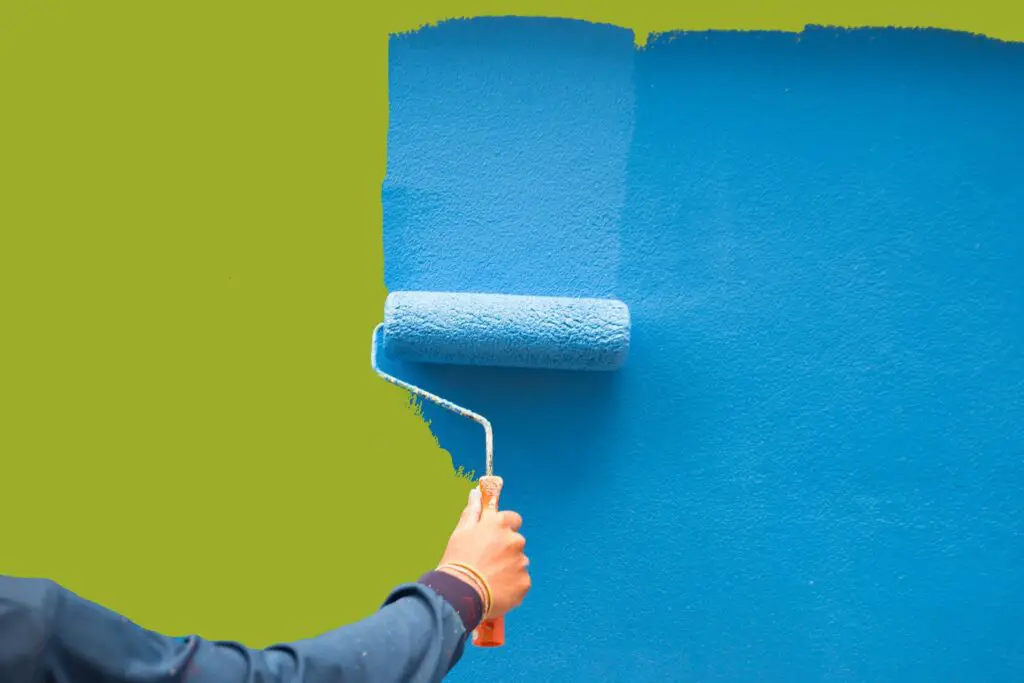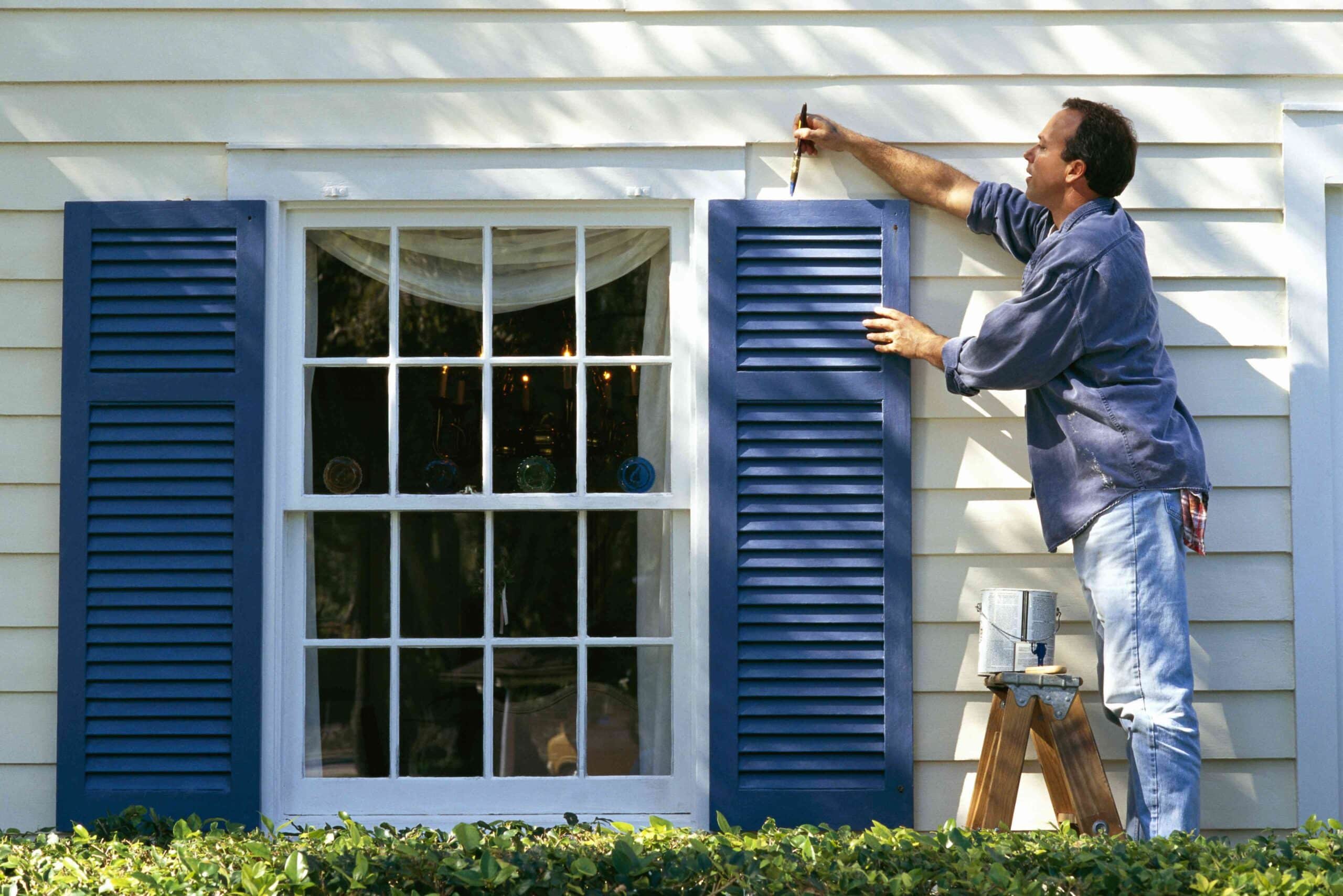How to remove exterior paint from interior walls
Introduction
How to remove exterior paint from interior walls: Removing exterior paint from interior walls can be a challenging task that requires careful consideration and appropriate techniques to avoid damaging the underlying surfaces. Whether you’ve recently moved into a property with unwanted exterior paint on its interior walls or you’re looking to restore the original interior wall finish, this process demands a mix of patience, the right tools, and the correct approach. In this guide, we will delve into various methods and steps to effectively and safely remove exterior paint from interior walls, allowing you to bring back the desired aesthetic without causing unnecessary harm to your living space.
The presence of exterior paint on interior surfaces can detract from the overall appeal of your home. However, fear not, as rectifying this situation is indeed possible with the right approach and tools at your disposal. In the following guide, we will delve into a comprehensive array of methods and step-by-step instructions on how to effectively and efficiently remove exterior paint from interior walls. By understanding the nuances of paint types, wall materials, and the safety measures required, you can undertake this task with confidence, ensuring a successful outcome that restores the beauty of your interior spaces.
Paint finding its way onto interior walls can be a perplexing issue for homeowners. Whether it occurred during an exterior renovation, through accidental splattering, or as a result of historical paint layers, the task of removing this paint without harming your interior surfaces might seem daunting. However, with the right guidance and a systematic approach, you can navigate this challenge effectively.

How do you remove exterior paint?
Removing Paint with Heat
You can also use heat to remove exterior house paint. A heat gun or an infrared paint remover will heat up the paint so it peels effortlessly away from the wood. This is a great technique if you want to avoid sanding after scraping paint or you don’t want to use chemicals.
Pressure Washing (if applicable): For larger surfaces, use a pressure washer to remove paint and residue. Hold the pressure washer nozzle at an appropriate distance to avoid surface damage.
Wire Brush (if applicable): Use a wire brush to remove paint from textured or intricate surfaces.
Final Cleaning: After paint removal, wipe down the surface with clean rags and mineral spirits to remove any remaining paint particles or residue.
Surface Repair: Assess the condition of the surface. If there are any gouges or imperfections, fill them with appropriate filler and sand the area again.
Priming and Painting: If you plan to repaint, apply a suitable primer to the prepared surface before applying the new paint. Follow with your chosen exterior paint.
How do you remove wrong paint from walls?
If you’re removing the paint by hand, you’ll need to wash the wall with soap and water first. Then, you can apply a sanding block, electric sander, or wire brush to the wall to weaken the paint. Once you’ve weakened the paint, apply a scraper to remove the flaked or bubbling sections.
Test an Inconspicuous Area: Before proceeding, test your chosen removal method on a small, hidden section of the wall to ensure it doesn’t cause damage.
Be Patient: Removing paint requires patience. Take your time to avoid harming the wall.
Avoid Overworking: Applying excessive force during scraping or sanding can lead to wall damage. Work gently and gradually.
Match Paint Types: Ensure that the new paint you apply is compatible with the existing paint and finish.
Consult Professionals: If you’re unsure or uncomfortable with the process, consider seeking advice from professionals to avoid further complications.
What is the best tool to remove exterior paint?
Heat guns are an excellent tool for removing old paint, varnish, and other finishes. The theory behind heat guns is to subject the exterior paint to temperatures that will cause the paint to wilt away. Temperatures should be calibrated to remain short of damaging or burning the house.
Heat Gun: A heat gun is a powerful tool for removing paint, especially if the paint is old, thick, or stubborn. It uses heat to soften the paint, making it easier to scrape off. Heat guns are particularly useful for wood surfaces, as they can minimize damage that scraping alone might cause. However, caution is necessary to avoid scorching or igniting the wood.
Paint Scraper: A paint scraper or putty knife is a versatile and essential tool for removing exterior paint. It comes in various sizes and shapes and is ideal for gently scraping away loose or peeling paint. A flat-edged scraper is effective for larger flat surfaces, while a pull scraper with a blade perpendicular to the handle is better for intricate or contoured surfaces.
Electric Sander: An electric sander equipped with the appropriate grit sandpaper can efficiently remove paint and smooth the surface. It’s particularly useful for larger areas and can speed up the process compared to manual sanding. However, it’s important to control the pressure and avoid damaging the underlying material.
Paint Stripp: Paiersnt strippers are chemical solutions designed to break down and soften paint for easy removal. There are both solvent-based and eco-friendly options available. Paint strippers are effective for large areas and surfaces with multiple layers of paint. Always follow the manufacturer’s instructions and take proper safety precautions when using these products.
What is a good chemical to remove paint?
All over the globe, Ammonia and Acetone are the two widely used chemicals to remove paint from the metal surface. When ammonia reacts with the metal, it stabilizes acrylic emulsions by raising the PH level. As a result of this, metal loosens its bond with the paint and allows the paint to peel off from metal.
Methylene Chloride-Based Paint Strippers: Methylene chloride-based paint strippers are powerful and fast-acting solvents that can effectively remove multiple layers of paint. They work well on a variety of surfaces, including wood, metal, and masonry. However, these products can be harsh and emit strong fumes, so proper ventilation and safety precautions are crucial. Methylene chloride-based strippers are not recommended for indoor use due to health concerns.
N-Methyl pyrrolidone (NMP) Paint Strippers: NMP-based paint strippers are a safer alternative to methylene chloride. They are less toxic and emit fewer fumes. NMP strippers are effective at removing paint from various surfaces, but they may require a longer dwell time compared to methylene chloride-based products.
Citrus-Based Paint Strippers: Citrus-based paint strippers are eco-friendly options that use natural citrus terpenes to break down paint. They are safer to use indoors and have a milder odor compared to traditional solvents. While they might take longer to work, they are a good choice for those who prefer a more environmentally conscious option.
What are the two most common methods for paint removal?
There are two main methods of removing paint; heat removal and sanding removal. Each of these has its own set of tools that will be required to carry them out. Some paint removal jobs will require you to apply both methods, so you should prepare accordingly.
Mechanical Removal: Mechanical removal involves physically scraping, sanding, or using abrasive tools to remove paint from surfaces. This method is preferred when dealing with smaller areas, intricate details, or when you want to avoid using chemicals. Here are some common mechanical removal techniques:
Scraping: Using a paint scraper or putty knife, you gently scrape away loose or peeling paint. This method is effective for small areas or surfaces with minimal paint buildup. It’s important to use the right angle and pressure to avoid damaging the underlying material.
Sanding: Sanding involves using sandpaper or an electric sander to smooth surfaces and remove paint layers. Sanding is useful for preparing surfaces for repainting or for removing paint that is firmly adhered. Different grits of sandpaper are used to progressively remove paint and create a smooth finish.
What is the best way to remove dried paint?
If warm water doesn’t work, use cooking oil. Olive or vegetable oil helps to soften the paint, making it easier to remove. All you need to do is use a cloth to apply the oil, working it into the paint and leaving it to sit for a while. Keep rubbing and wiping at the paint until it’s gone.
Assess the Situation: Before you start, assess the type of paint and the surface it’s on. Different surfaces and paint types may require specific methods to avoid damaging the underlying material.
Safety First: Wear appropriate safety gear, including safety goggles, gloves, and a dust mask, to protect yourself from paint chips and dust.
Scraping: If the dried paint is on a hard surface like wood, metal, or glass, you can use a flat-edged paint scraper or putty knife to gently scrape off the paint. Take care not to scratch the surface; use gentle pressure and an appropriate angle.
Heat Gun: For thicker layers of paint, a heat gun can soften the paint, making it easier to scrape off. Keep the heat gun moving to avoid scorching the surface. Use a scraper to gently lift the softened paint.
What is a natural paint remover for walls?
Washing soda, water and flour
You can also use a mixture of washing soda, water and flour to remove paint. ‘Take a large vessel and pour four tablespoons of washing soda per one cup of water,’ advises Michael. ‘Once mixed together, add a tablespoon of flour to the mixture to thicken it.
Hot Water and Soap: A mixture of hot water and mild dish soap can be an effective natural paint remover for water-based paints. Apply the soapy water to the painted area and let it soak for a while. Then, use a scrub brush or abrasive pad to gently scrub away the softened paint. This method is safe and works well for small areas.
Vinegar: Vinegar is a versatile household item that can help soften and remove paint. Heat vinegar until warm and apply it to the painted surface using a cloth. Let it sit for a while, and then use a scraper or scrub brush to gently remove the paint. Rinse the area with water afterward.
Baking Soda: Create a paste by mixing baking soda with water. Apply the paste to the painted area and let it sit for some time. Use a scrub brush to gently scrub away the softened paint. Baking soda is especially effective for removing latex paint.
Lemon Juice: Lemon juice’s natural acidity can help break down paint. Apply lemon juice to the painted surface and allow it to sit for a while. Gently scrub the softened paint using a scrub brush or cloth. Lemon juice is particularly useful for water-based paints.
What chemical removes paint from walls?
The most common chemicals and solvents used to remove paint include methylene chloride, acetone, toluene, methanol, N-methyl-pyrrolidone, sodium hydroxide and ammonia hydroxide. Other paint removing chemical solvents include isopropyl alcohol, acetone, lacquer thinner and epoxy.
Methylene Chloride-Based Paint Strippers: Methylene chloride-based paint strippers are strong and effective solvents for removing paint from walls. They work quickly and are particularly useful for removing multiple layers of paint. However, they emit strong fumes and should be used in well-ventilated areas. Additionally, they are not recommended for indoor use due to health concerns.
N-Methyl pyrrolidone (NMP) Paint Strippers: NMP-based paint strippers are a safer alternative to methylene chloride. They are less toxic and emit fewer fumes. NMP strippers are effective at removing paint from various surfaces, but they may require a longer dwell time compared to methylene chloride-based products.
Citrus-Based Paint Strippers: Citrus-based paint strippers use natural citrus terpenes to break down paint. They are safer to use indoors and have a milder odor compared to traditional solvents. While they might take longer to work, they are a good choice for those who prefer a more environmentally conscious option.

Conclusion
Through the exploration of various methods, you’ve gained a deeper understanding of how to tackle this challenge while preserving the integrity of your interior surfaces. Whether you opt for mechanical methods like scraping and sanding, or chemical solutions for paint stripping, your choice will depend on factors such as paint type, wall material, and your comfort level with the process. Remember, thorough preparation, proper safety measures, and selecting the appropriate tools are pivotal to achieving a satisfying outcome. As you embark on this journey, it’s important to test any chosen method on a small inconspicuous area first, ensuring you have a clear understanding of its impact before applying it more broadly.
Ultimately, the goal of removing exterior paint remover from interior walls is to rejuvenate your living spaces, restoring them to their original beauty and allowing you to implement your interior design visions with a clean slate. By following the guidelines outlined in this guide, you’re well-equipped to navigate the intricacies of paint removal and transform your home’s interior into a canvas of renewed elegance.
Throughout this journey, keep in mind that preparation is key. Safeguarding your health and the integrity of your interior surfaces necessitates a meticulous approach. Always prioritize safety by using appropriate protective gear, well-ventilated workspaces, and eco-friendly disposal methods for any waste generated.




